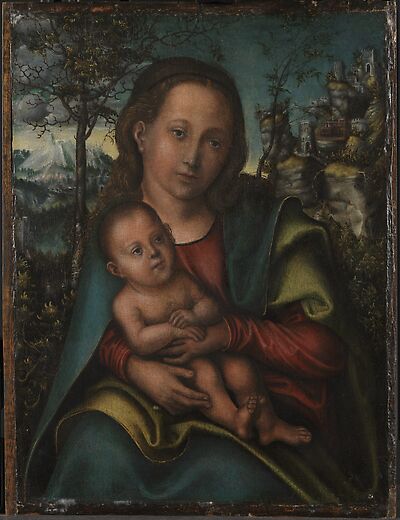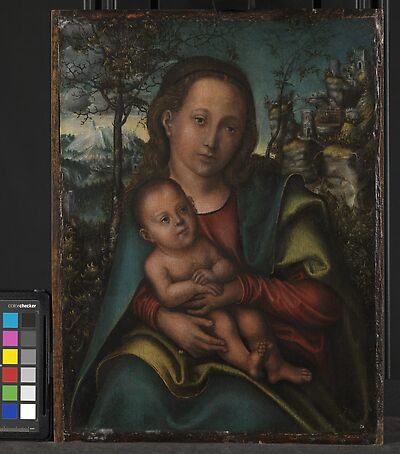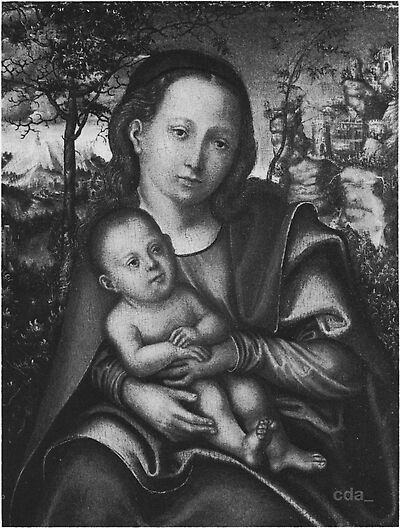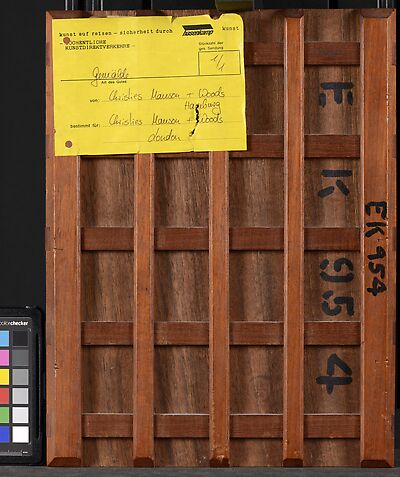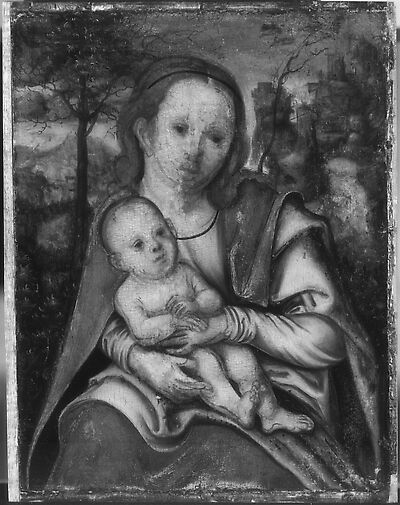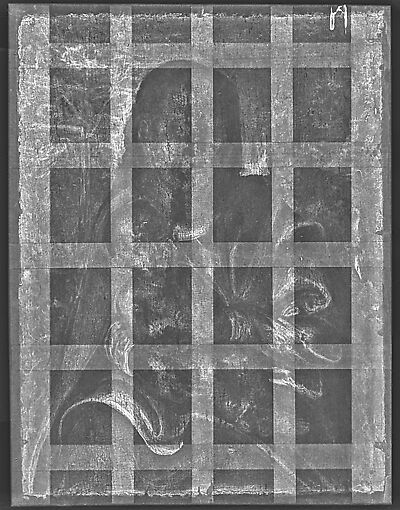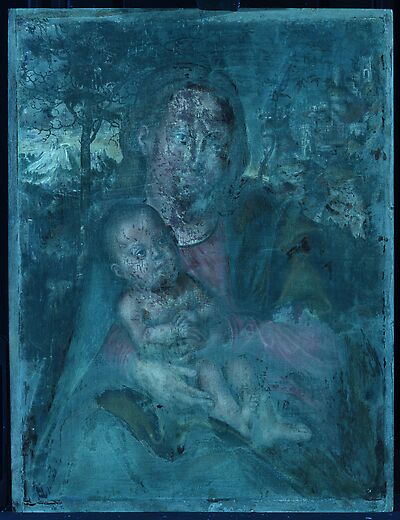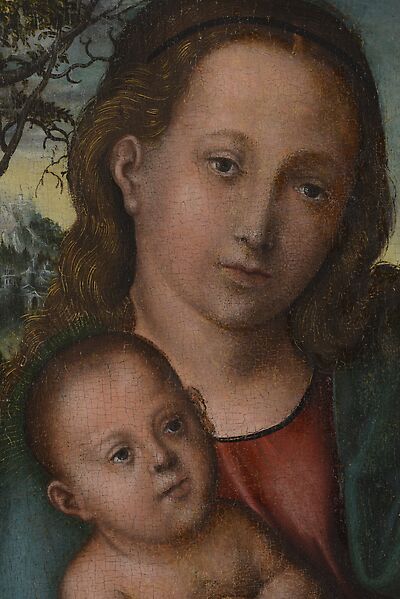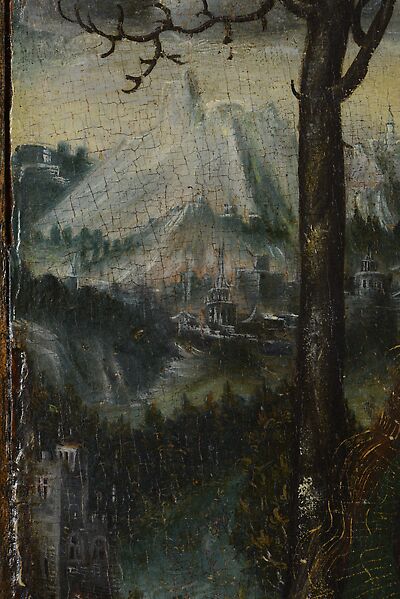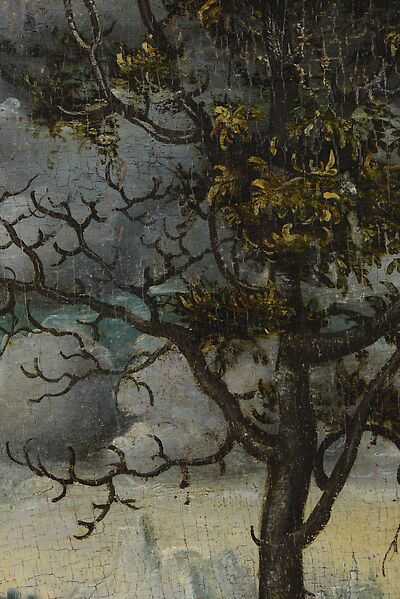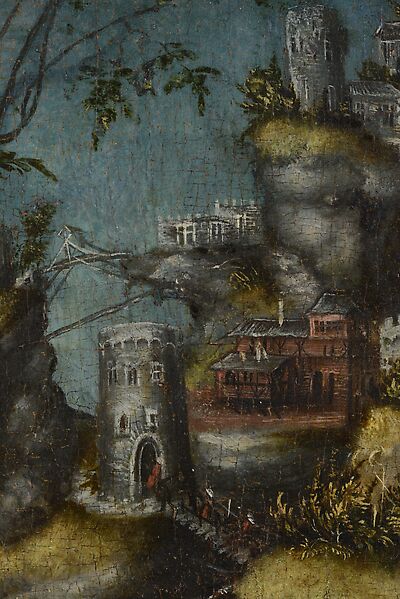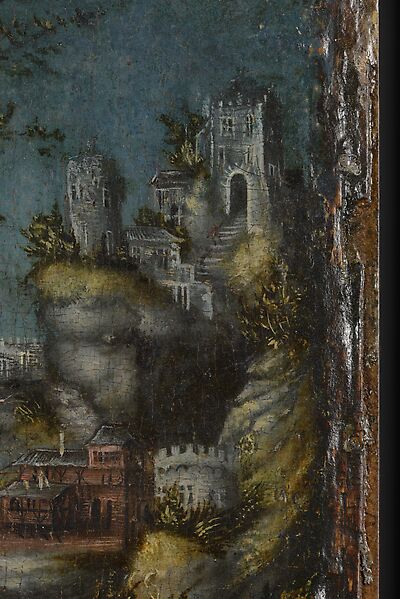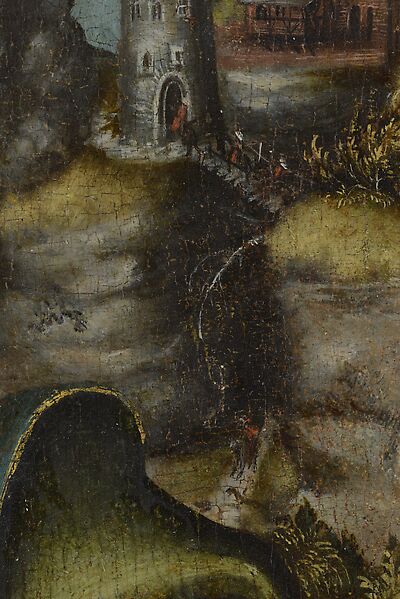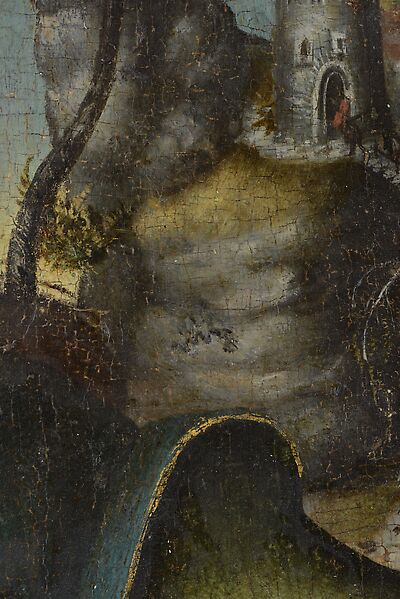- Attributions
-
Workshop Lucas Cranach the Elder
Lucas Cranach the Elder
Attributions
| Workshop Lucas Cranach the Elder | [cda 2016] |
| Lucas Cranach the Elder | [Friedländer, Rosenberg 1979, No. 104] |
- Production dates
- about 1512 - 1515
about 1518
Production dates
| about 1512 - 1515 | [unpublished examination report Heydenreich, Gras, 02.11.2024], [expertise A. Stange, 15 June 1964] according to [Friedländer, Rosenberg 1979, No. 104] |
| about 1518 | [expertise M. J. Friedländer, 22 Sept 1938] according to [Friedländer, Rosenberg 1979, No. 104] |
| about 1518 - 1520 | [Friedländer, Rosenberg 1979, No. 104] |
- Dimensions
- Dimensions of support: 35 x 27 cm
Dimensions
Dimensions of support: 35 x 27 cm
[Friedländer, Rosenberg 1979, no. 104]
- Signature / Dating
None. A fake insignia on the rocks at the top right was removed during conservation treatment.
Signature / Dating
None. A fake insignia on the rocks at the top right was removed during conservation treatment.
[Friedländer, Rosenberg 1979, no. 104]
- Inscriptions and Labels
on the reverse of the new support: - black paint: 'EK 954'
on the cradle:
- paint: 'EK 954'
- yellow label: '… hasenkamp …
Inscriptions and Labels
Inscriptions, Badges:
on the reverse of the new support:
- black paint: 'EK 954'
on the cradle:
- paint: 'EK 954'
- yellow label: '… hasenkamp Gemälde 1/1 von: Christies Manson + Woods Hamburg, bestimmt für: Christies Manson + Woods London'
- circular stamp
- handwritten in pen: '1494'
[unpublished examination report Heydenreich, Gras, 02.11.2024]
- Owner
- Private Collection
- Repository
- Private Collection
- CDA ID
- PRIVATE_NONE-P108
- FR (1978) Nr.
- FR104
- Persistent Link
- https://lucascranach.org/en/PRIVATE_NONE-P108/
